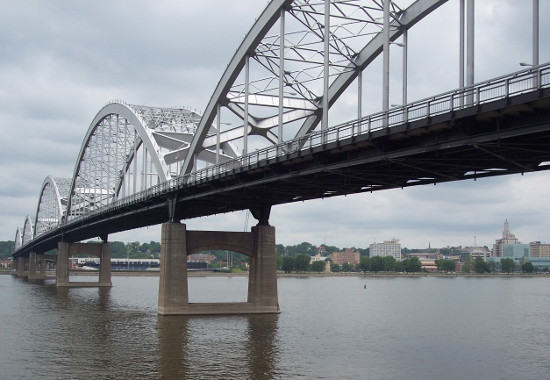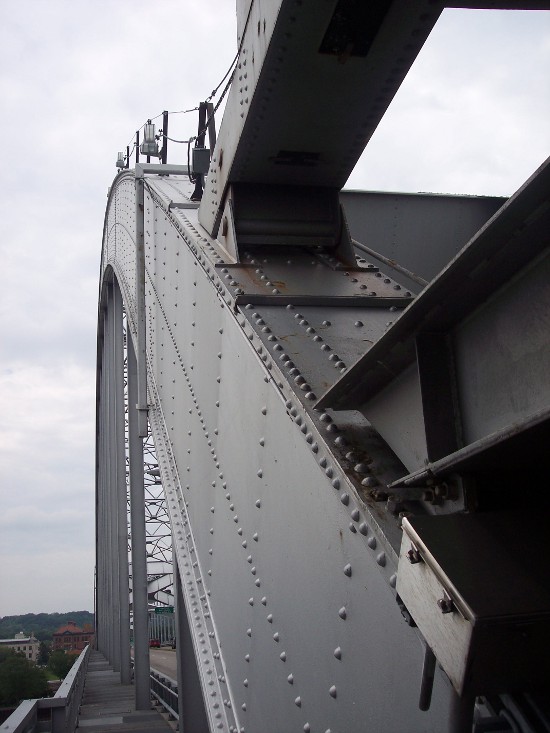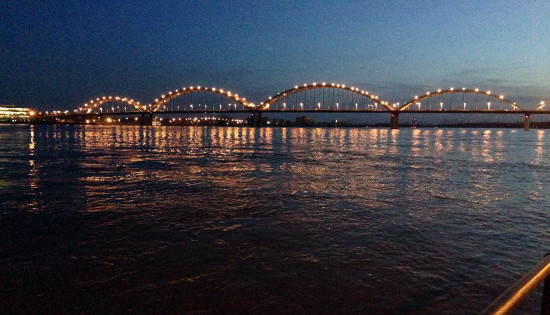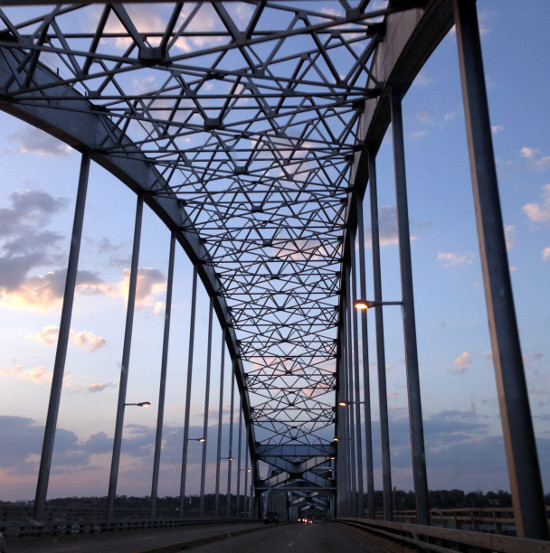
Connecting Davenport and Rock Island, the Centennial Bridge is one of the most beautiful architectural structures in the Quad Cities. Viewed in the daytime, it is a graceful example of modern design. At night, the lights on the bridge's five arches transform it into the river's showpiece.
The bridge was designed by Iowa native Edward Ashton (1903-1985). Its lack of ornamentation is consistent with modern design's dictum that form follows function, yet Ashton stated that he built every bridge with an eye for the visible beauty of the structure. He designed more than 20 bridges - including the Julien Dubuque Bridge in Dubuque, Iowa - but considered the Centennial Bridge his best design.
The bridges that have spanned the Mississippi in the immediate Quad Cities area are a virtual record of advancements in engineering. The first bridge to connect Davenport and the Rock Island Arsenal was wooden. Its 1872 replacement was iron, and it in turn was replaced in 1896 with a steel bridge that is still in use.
When the Crescent Rail Bridge was completed three years later, it was built using a similar steel-construction form. Both bridges needed a rotating span to allow barges and other river traffic to pass.
The first span of the Interstate 74 bridge, connecting Bettendorf and Moline, was completed in 1935, 18 months before San Francisco's Golden Gate Bridge was finished. (The second I-74 span was opened in 1959.) Though they are substantially different in scale (the I-74 bridge towers are 160 feet tall, while the Golden Gate's towers are 746 feet in height), both are suspension bridges built with similar engineering principles.

Completed in 1940, the Centennial Bridge was the first four-lane bridge to cross the Mississippi. As historian Robert Jackson wrote in 1995 for the Historic American Engineering Record: "The Centennial Bridge is a technologically significant structure as the first tied-arch span across the Mississippi River, and is also regarded as one of the most striking bridges ever built across the 'Father of Waters.'"

In 1988, 128 sodium lamps were installed on the bridge's arches. Funding for the project was raised by the Lights! River! Action! initiative of River Action. The lights on top of the arches, which rise 89 feet above roadway, have little illuminating effect on the traffic crossing the bridge but are spectacular when viewed from the riverfront - especially when twinned with their reflection on the river's surface. At night, the lights draw attention to the bridge's bold design and create one of the most compelling images of the Quad Cities area.
Ashton's daughter, Ruth Johnson, spoke enthusiastically about the lighting as an addition to her father's design in a telephone interview for this article. Rightfully, she regards the bridge as a work of art.

Bruce Walters is a professor of art at Western Illinois University.
This is part of an occasional series on the history of public art in the Quad Cities. If there's a piece of public art that you'd like to learn more about, e-mail the location and a brief description to BD-Walters@wiu.edu.










